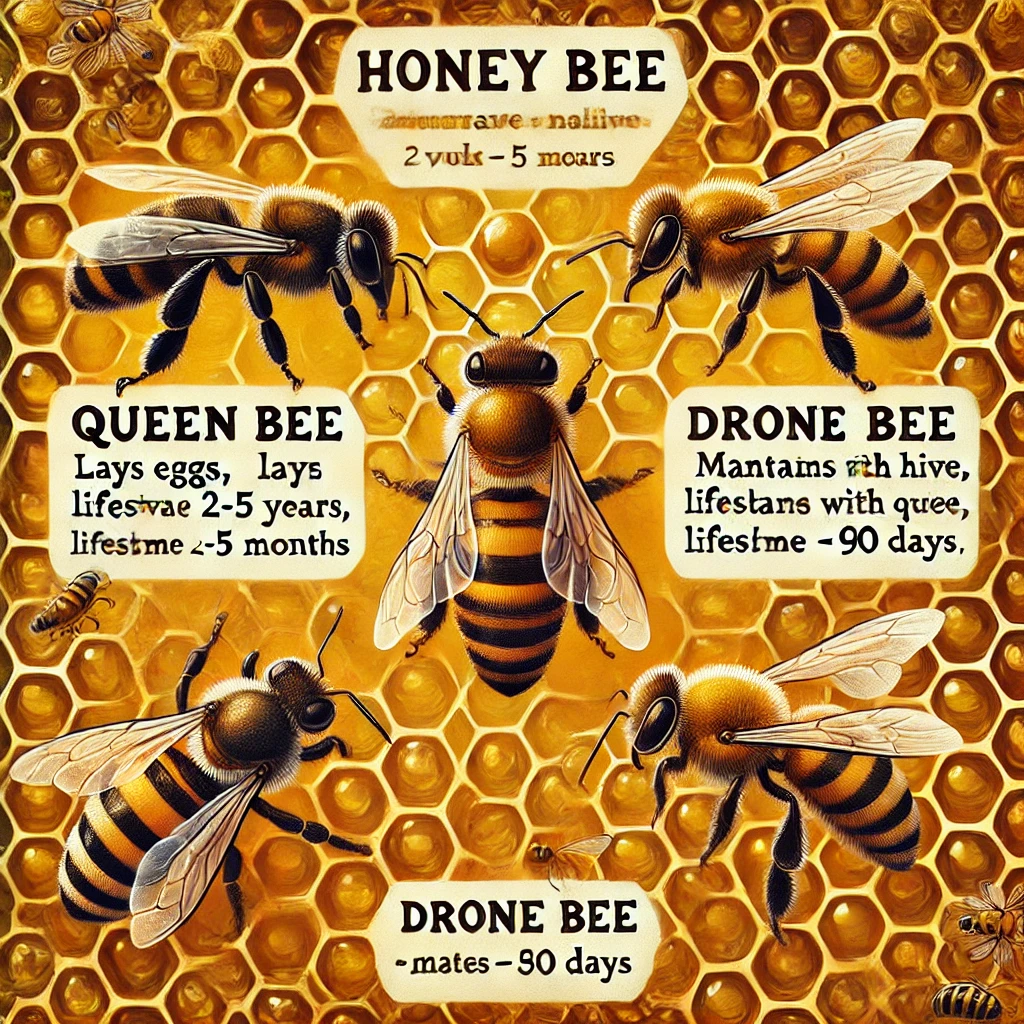
Honey bees play various roles within their colony, ensuring the hive functions as a cohesive unit. The roles are primarily determined by the type of bee: queen, worker, and drone. Here’s a breakdown:
- Queen Bee
Role: The sole reproductive female in the colony.
Key Responsibilities:
Laying eggs: She can lay up to 2,000 eggs per day during peak seasons.
Producing pheromones: These chemicals help regulate the hive’s behavior and maintain social harmony.
Lifespan: Typically 2-5 years.
- Worker Bees (Females)
Role: Non-reproductive bees responsible for various hive activities.
Key Responsibilities:
Nursing: Feed and care for the queen, larvae, and drones.
Cleaning: Keep the hive clean and remove debris or dead bees.
Foraging: Collect nectar, pollen, water, and propolis (a resin-like material).
Hive Construction: Build and maintain the wax combs.
Guarding: Protect the hive from intruders.
Fanning: Regulate hive temperature by fanning their wings.
Lifespan: 6 weeks in summer (active season) or up to 6 months in winter.
- Drone Bees (Males)
Role: Mating with virgin queens from other hives.
Key Responsibilities:
Mating: Their primary purpose is to ensure genetic diversity by mating with queens during nuptial flights.
No Hive Duties: Drones do not forage or perform hive maintenance.
Lifespan: About 90 days (often expelled from the hive during winter).
Each bee’s role is crucial for the hive’s survival, creating a balanced and efficient system.